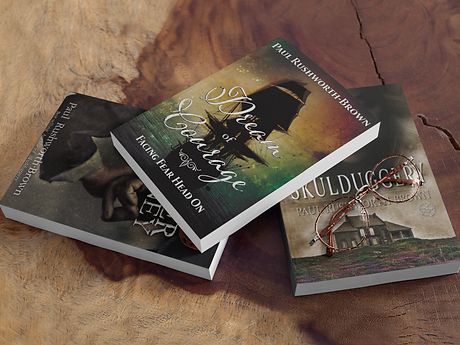Peasant Sex and Marriage in 17th Century Yorkshire
- Paul Rushworth-Brown

- Oct 23, 2020
- 4 min read
Updated: 7 days ago

According to canon law, girls could marry at the age of 12 and boys at the age of 14. Childhood in medieval England was determined by both social and biological factors. It was thought that at this point, the child was capable and competent to understand his or her actions, thus rendering them responsible for them.
One common belief is that children, especially girls, married young and in some cases that did occur among the nobles, but very rarely in peasant households. In some noble house’s marriages were indeed contracted at a young age, a betrothal for reasons of property and family alliance. Generally, the average age of marriage was in the middle twenties for women but there were variations in nuptiality as research shows that up to twenty-two percent of pauper women never married. The marriage age of men was probably the same or a bit older but affected by insufficient incomes to cross the eligibility of marriage. The increase in service and apprenticeship in the late 17th Century may have had implications on the incidence of marriage.
Given its social significance, marriage was considered a matter of a larger community, not only the couple themselves. The idea of young women being thrown into a marriage with a much older man, that they did not care for, was a myth created by historians. However, most marrying couples were expected to consult their choice of a partner with their parents and relatives.
There were several criteria which decided whether a match was ‘appropriate’. It was recommended that the couple should be of similar age, background, financial circumstances, and religious beliefs. The husband and wife should like and respect each other—even love each other—but they should beware of mere sexual fascination and look for other qualities such as whether they could keep house and cook. Most importantly, a woman should be a virgin on her wedding night and infidelity was punishable with death. However, records do indicate that between 10% and 30% of women were pregnant before they were married.

On the night of the wedding when the wedding had to be consummated and the wife would have sex with her husband for the first time, there also existed laws. The church acknowledged that a woman was required as part of God's play to go forth and multiply. A woman shouldn't, however, enjoy sexual relations. Married life was perceived as a parallel of Christ’s bond with his church, so passionate love between husband and wife was regarded as undesirable. Sex in the missionary position was the only form of sex deemed acceptable and natural. All other positions and sexual acts were considered sodomy; the charge of sodomy was so serious that it would have been tried in the secular court and possibly been subject to a death sentence.
The Church taught that the purpose of sex is reproduction and sex was not permitted on a Wednesday, or a Friday, on a Sunday, or Saturday, on any of the 60 church feast days, during lent, during Advent, during Whitsun week, Easter week, while a woman is menstruating, while a woman is pregnant, while a woman is breastfeeding, within the walls of a church, during daylight, if she is completely naked, for the eight days leading up her husband taking the Eucharist or if the couple were related.
To ensure the marriage was legally binding the bedding ceremony would take place. The bedding ceremony refers to the wedding custom of putting the newlywed couple together in the marital bed before numerous witnesses, thereby completing the marriage. In most traditions, the bed was blessed by a priest and the newlyweds were put in bed by their family, friends, and neighbours. The purpose of the ritual was to establish the consummation of the marriage, either by witnessing the couple's first sexual intercourse or symbolically, by leaving before consummation.

Paul Rushworth-Brown is the author of three novels:

📚 "Skulduggery" 📚
Step back in time to the English Reformation, where a family of copyholders is plunged into a perilous journey. Secrets, mysteries, and unforgettable characters await, all against a backdrop of historical turmoil. You'll be on the edge of your seat as twists and turns keep you guessing until the shocking finale.

📚 "Red Winter Journey" 📚
Travel to 17th-century England in the midst of civil war. Loyalties are tested, and an epic tale of adventure, love, and sacrifice unfolds. Follow the incredible journey of a boy becoming a man and a mother's unwavering love for her son. With every page, you'll experience a historic rollercoaster ride filled with surprises and passion.

📚 "Dream of Courage" 📚
Join the Rushworths on their journey from humble beginnings to a quest for fortune. Pursued by menacing figures and hidden secrets, the story unfolds in the heart of a bygone era. Will Robert escape the clutches of danger, or will love be forever out of reach? This gripping narrative will keep you captivated until the very end. Don't miss out on this trilogy that has captivated readers and left them astonished by its unforgettable characters, surprising twists, and jaw-dropping endings. Dive into these tales of history, courage, and love today!






.png)

.png)
.png)



.png)







Comments